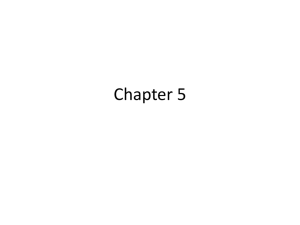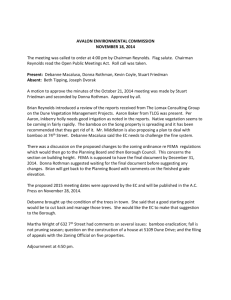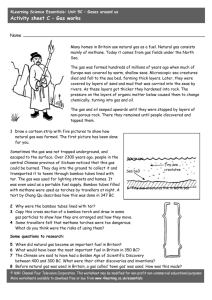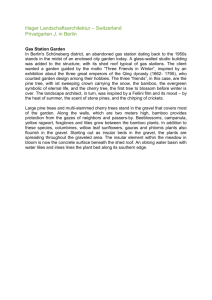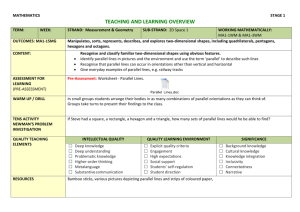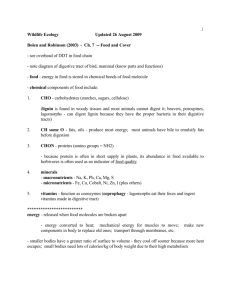PPP with a Difference
advertisement
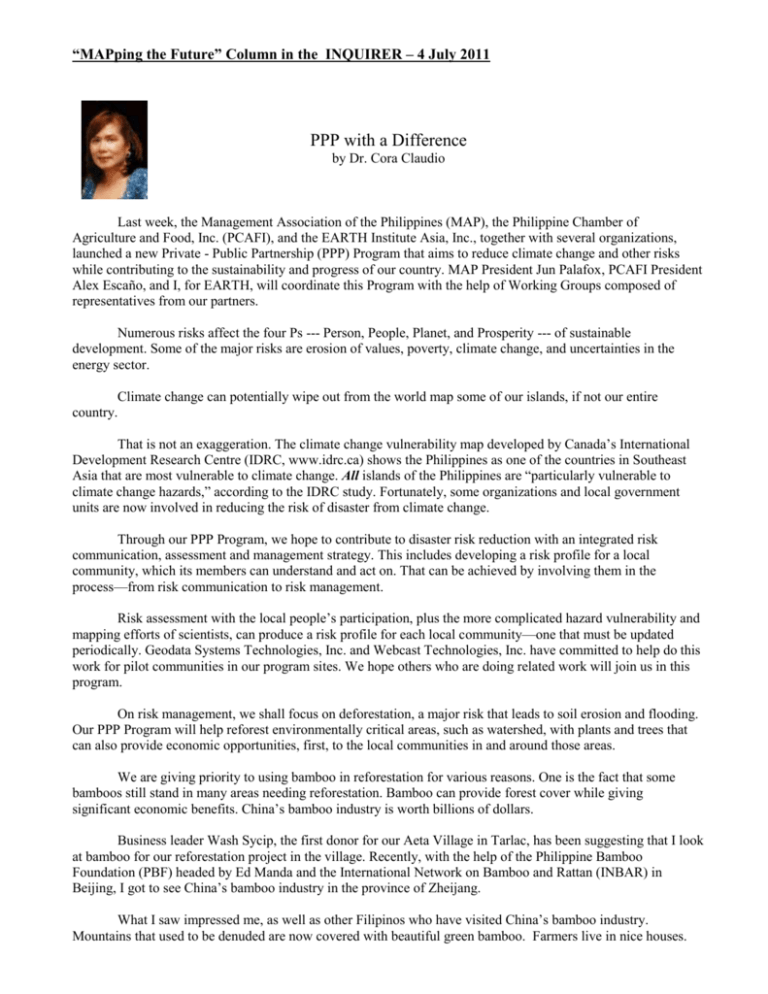
“MAPping the Future” Column in the INQUIRER – 4 July 2011 PPP with a Difference by Dr. Cora Claudio Last week, the Management Association of the Philippines (MAP), the Philippine Chamber of Agriculture and Food, Inc. (PCAFI), and the EARTH Institute Asia, Inc., together with several organizations, launched a new Private - Public Partnership (PPP) Program that aims to reduce climate change and other risks while contributing to the sustainability and progress of our country. MAP President Jun Palafox, PCAFI President Alex Escaño, and I, for EARTH, will coordinate this Program with the help of Working Groups composed of representatives from our partners. Numerous risks affect the four Ps --- Person, People, Planet, and Prosperity --- of sustainable development. Some of the major risks are erosion of values, poverty, climate change, and uncertainties in the energy sector. Climate change can potentially wipe out from the world map some of our islands, if not our entire country. That is not an exaggeration. The climate change vulnerability map developed by Canada’s International Development Research Centre (IDRC, www.idrc.ca) shows the Philippines as one of the countries in Southeast Asia that are most vulnerable to climate change. All islands of the Philippines are “particularly vulnerable to climate change hazards,” according to the IDRC study. Fortunately, some organizations and local government units are now involved in reducing the risk of disaster from climate change. Through our PPP Program, we hope to contribute to disaster risk reduction with an integrated risk communication, assessment and management strategy. This includes developing a risk profile for a local community, which its members can understand and act on. That can be achieved by involving them in the process—from risk communication to risk management. Risk assessment with the local people’s participation, plus the more complicated hazard vulnerability and mapping efforts of scientists, can produce a risk profile for each local community—one that must be updated periodically. Geodata Systems Technologies, Inc. and Webcast Technologies, Inc. have committed to help do this work for pilot communities in our program sites. We hope others who are doing related work will join us in this program. On risk management, we shall focus on deforestation, a major risk that leads to soil erosion and flooding. Our PPP Program will help reforest environmentally critical areas, such as watershed, with plants and trees that can also provide economic opportunities, first, to the local communities in and around those areas. We are giving priority to using bamboo in reforestation for various reasons. One is the fact that some bamboos still stand in many areas needing reforestation. Bamboo can provide forest cover while giving significant economic benefits. China’s bamboo industry is worth billions of dollars. Business leader Wash Sycip, the first donor for our Aeta Village in Tarlac, has been suggesting that I look at bamboo for our reforestation project in the village. Recently, with the help of the Philippine Bamboo Foundation (PBF) headed by Ed Manda and the International Network on Bamboo and Rattan (INBAR) in Beijing, I got to see China’s bamboo industry in the province of Zheijang. What I saw impressed me, as well as other Filipinos who have visited China’s bamboo industry. Mountains that used to be denuded are now covered with beautiful green bamboo. Farmers live in nice houses. Companies are expanding their factories to process bamboo for food, textile, beauty and wellness, furniture and fixtures, and construction of buildings. Part of their production output is exported to the U.S. and other developed countries that have high demand for bamboo products. In the Philippines, we have the needed elements for building a bamboo industry. First, we have vast tracts of lands for bamboo plantations. For our PPP program, the Philippine Disaster Recovery Foundation, Inc., which MAP member Manny Pangilinan set up to help reforest the Marikina Watershed, has identified about 4,000 hectares of the watershed for us to work on. On the other hand, Gov. Aurelio Umali, through the help of MAP member and former Congressman Rene Diaz, has committed 2,500 to 8,000 hectares for reforestation with bamboo in Nueva Ecija. The provincial government of Albay, headed by Gov. Joey Salceda, has just joined us. At least 2,500 hectares will be available there. The total of about 14,500 hectares in those initial sites is but a small part of the lands that need reforestation in our country. But they are enough to start a PPP Program that can potentially make a difference for our country’s sustainability. Second, we have the scientific expertise on bamboo in UP and a few other schools and in the DENR’s Ecosystems Research and Development Bureau, which has been doing research on bamboo. We also have engineers, like Romy Sta. Ana, who are well experienced in setting up industrial plants. We have inventors, like Engr. Julius Labrador, who can develop bamboo processing technologies. We have companies, like EasyEco LED Philippines, that can assist in research and development on technologies for disaster risk reduction. At present, we must import most of the equipment for commercial bamboo processing. But developing technologies for processing bamboo into products with ready markets, such as barbecue sticks, does not need rocket science. Our technologists should respond to this need. Production of textile from bamboo requires more research. But we have challenged University of Houston Professor Rigoberto Advincula to apply his expertise on chemical and biomolecular engineering to address this need. We have other Filipino experts who can help develop other technologies for bamboo processing, as well as for plantation, e.g., bamboo tissue culture for commercial production. Third, we have leaders like Ed Manda of the PBF, Conrad Perreras of the Bamboo Network of the Philippines, and policy makers in the Philippine Bamboo Council, the Philippine Council for Sustainable Development, the National Economic and Development Authority, and the line departments, such as, the Departments of Environment and Natural Resources, Agriculture, Energy, Interior and Local Government, Social Welfare and Development, and others to attend to policy and decision making. Fourth, civic organizations, like the Earthsavers Movement with its indefatigable Director Cecile Alvarez and Secretary-General Roger Birosel, can provide support in creating awareness of climate change and other risks, and can mobilize volunteers to plant bamboos. Fifth, the DSWD has a sustainable livelihood fund for micro-enterprises. Sec. Dinky Soliman and her staff have committed to apply part of their fund for poor families that will join our PPP Program. The Development Bank of the Philippines (DBP) and the Land Bank of the Philippines have loan and grant funds for environment-related projects. We hope they will allocate part of these funds to help farmers and entrepreneurs plant or process bamboos. DBP, through its President, Francisco del Rosario, Jr., is taking the initial step to do that by supporting the establishment of bamboo nurseries in our pilot sites. In building a bamboo industry, we can learn from highly successful IT entrepreneur Dado Banatao who now chairs the Philippine Development Foundation (formerly Ayala Foundation). Dado’s five simple rules for start-ups in IT which are also applicable in the bamboo case are: (1) understand the requirements of your target market, (2) have a differentiable or unique technology, (3) develop a credible execution plan, (4) have the right people to implement it, and (5) have adequate funding support. We are counting on the private and public sector organizations mentioned above to help our PPP Program satisfy those rules. The initial tasks include market analysis for specific products; development of specific plan per site, of an information, education, and communication program, and a monitoring and evaluation system; and the documentation of our PPP Program to produce guidelines for other areas. We need the help of local and foreign funding agencies for these tasks. We now also invite investors to help in building our bamboo industry with a difference—one that aims at a quadruple bottom-line that benefits the four Ps of sustainability, especially the poor. (The author is President of EARTH Institute Asia and she chairs the MAP Task Force on Climate Change and Disaster Preparedness and the PCAFI Committee on Agriculture and Disaster Preparedness. Those interested in this PPP Program may contact her at earthinstitute@gmail.com. Feedback at map@globelines.com.ph. For previous articles, please visit www.map.org.ph)


